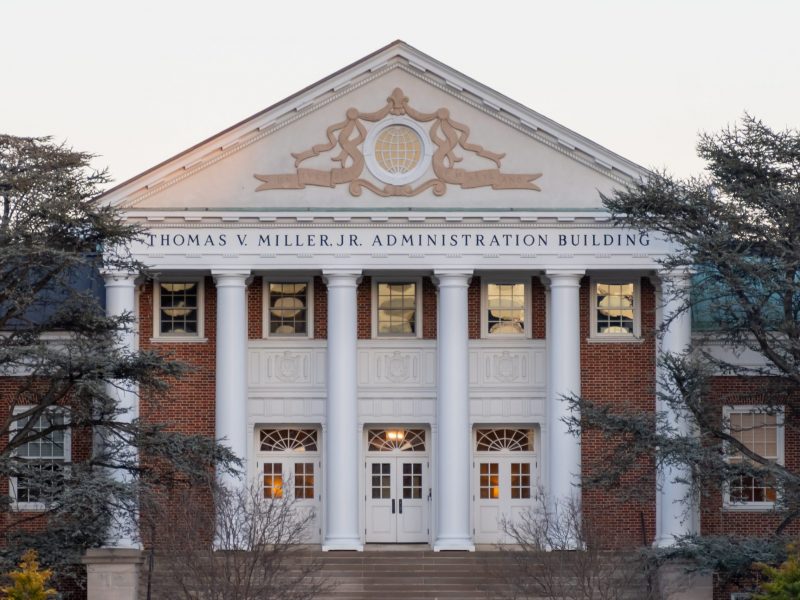For the past 12 years, Susan Farr has worked tirelessly to bridge the worlds of arts and academia in innovative new ways.
Next year, the 66-year-old Farr will retire as executive director of the Clarice Smith Performing Arts Center, wrapping up a career in which she redefined what it means to run a performing arts center at a research university. Farr was twice named one of the “100 Most Powerful Women” by Washingtonian Magazine for her contributions to the world of performing arts, but her innovative plans began long before CSPAC opened in 2001.
Farr sees a place for art in everything and sought to share that vision with the rest of the campus — an ambition born out of a long history of dissatisfaction. From 1969 to 1986, Farr worked behind the scenes at the performing arts centers at Stanford University and the University of California, Berkeley. After that, she promised herself she would never work in higher education again.
“They don’t have any direct commitment to academic programs,” Farr said, adding many other faculty members expressed similar frustrations.
However, when this university offered her the chance to spearhead a center not yet built in 1999, Farr took the opportunity to shape a new kind of university arts center. From the beginning, she made it her agenda to integrate CSPAC with the university’s academic programs.
“I think she was an outstanding leader when she came here,” said Kyle Kweder, CSPAC’s director of production and technology. Kweder recalled being in the room during her interview. “Susie has a vision. She has a compelling vision of how the arts can be.”
Although she knew she would be breaking new ground in the performing arts realm, Farr said she faced little adversity for her vision.
“I was surprised and delighted with the openness of people on this campus,” Farr said. “It’s all about finding the people who are enthusiastic about ideas.”
Many performances Farr supported and held at CSPAC reached beyond the world of the performing arts. In 2010, “The Matter of Origins” blended physics with interpretive dance, and students also had the opportunity to engage in dialogue with the dancers after the show. The following year, CSPAC presented “Fortune’s Bones,” a performance and discussion about exploratory science and respect for human life.
“[Farr’s] very skilled at looking at what’s there and what needs to be done differently,” said Jerry Yoshitomi, a Los Angeles-based consultant who has known Farr for more than three decades. “She transformed the landscape of performing arts centers on a university campus.”
Farr also worked to ensure everyone involved with CSPAC worked together as a cohesive whole and encouraged them to interact as a family, according to Kweder. This included focusing on students’ needs as part of CSPAC’s success.
Madeline Bell — a 2006 university alumna who now works as programming manager at the Flynn Performing Arts Center in Vermont — said Farr’s guidance had a heavy impact on her as a theatre student. While she was initially intimidated by Farr’s 6-foot frame and industry prominence, Bell said her former employer soon became a mentor.
“When I started as a student working for the Center I knew I was getting a degree in theatre, but I didn’t know what I wanted to do with my degree,” said Bell, now 30. “The encouragement that I got from Susie … and the mentorship that I received really meant the world to me. The Clarice Smith Center and Susie gave me a place to belong.”
Administrators will begin the search for Farr’s successor in the spring. Upon her retirement, Farr said she wants to become fluent in Spanish, take up a hobby involving animal welfare, volunteer at Miriam’s Kitchen in Washington and, of course, continue attending performances at CSPAC.
newsumdbk@gmail.com


